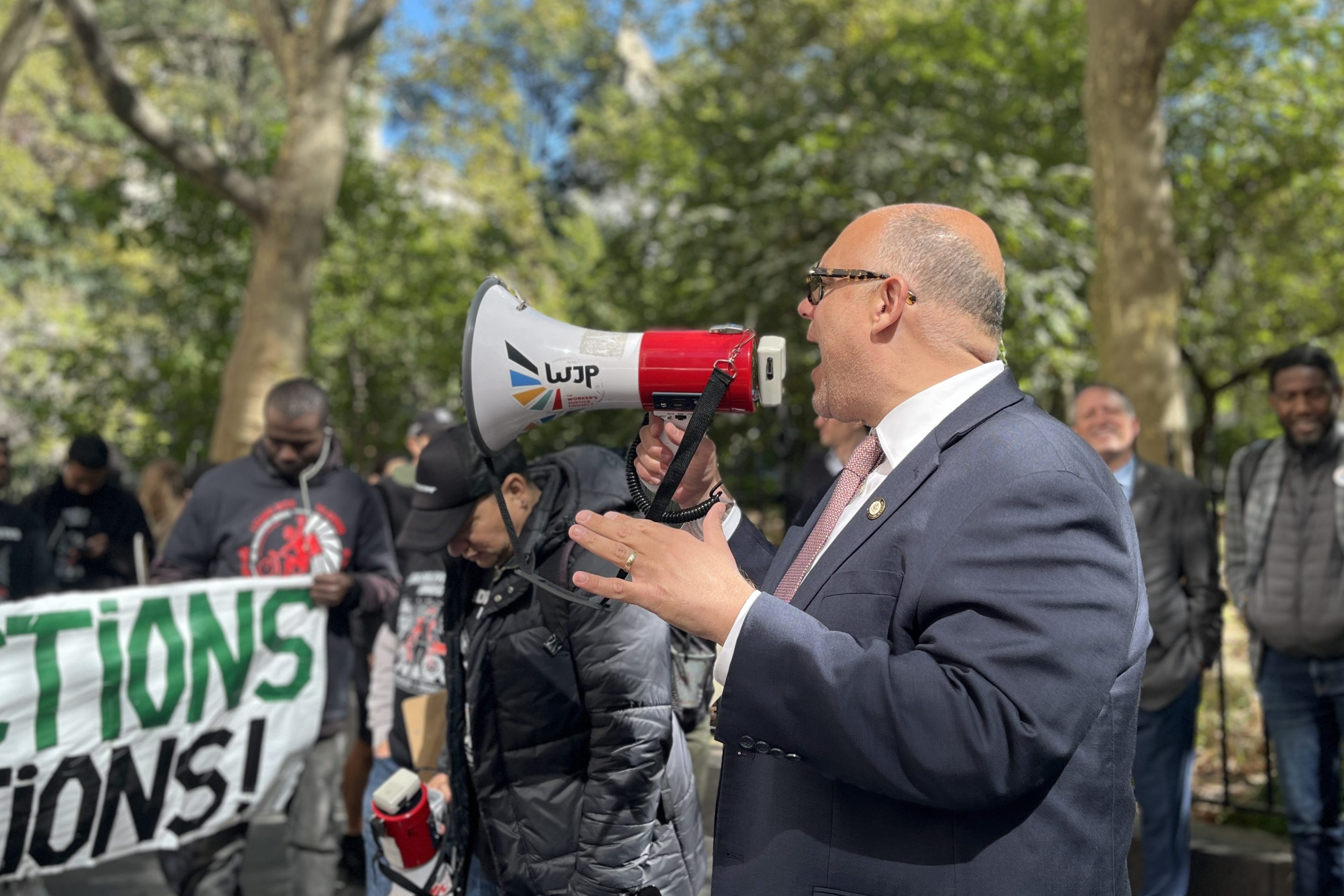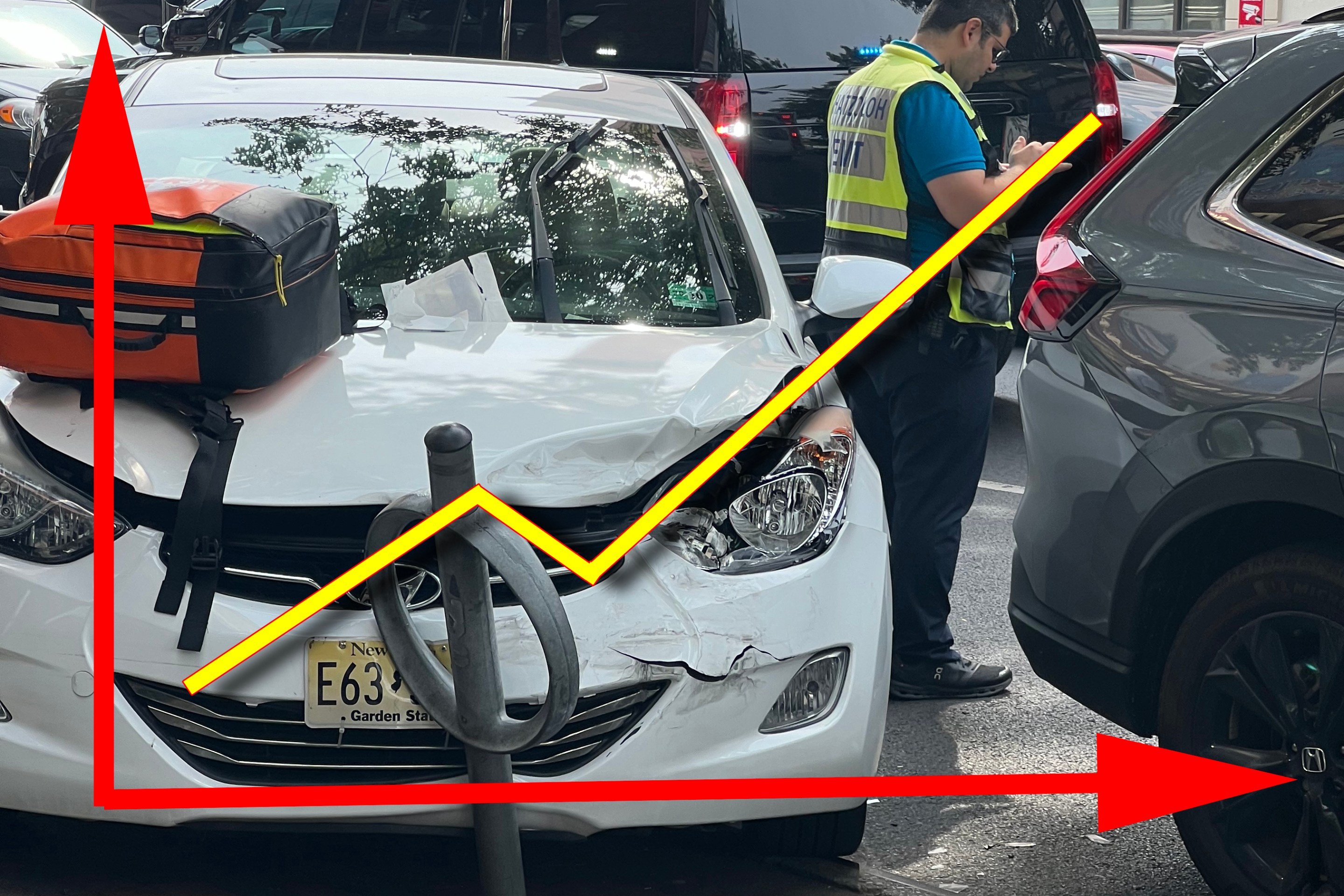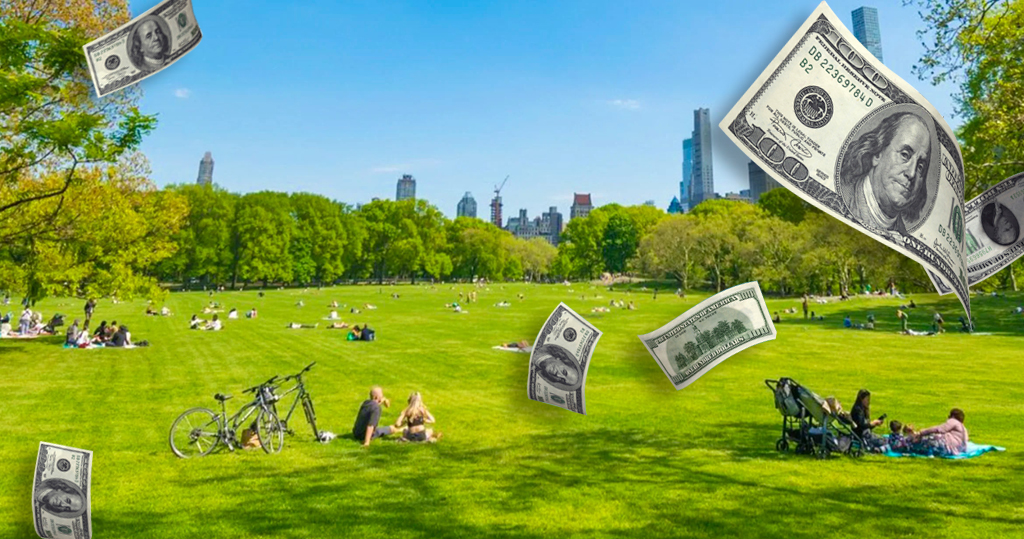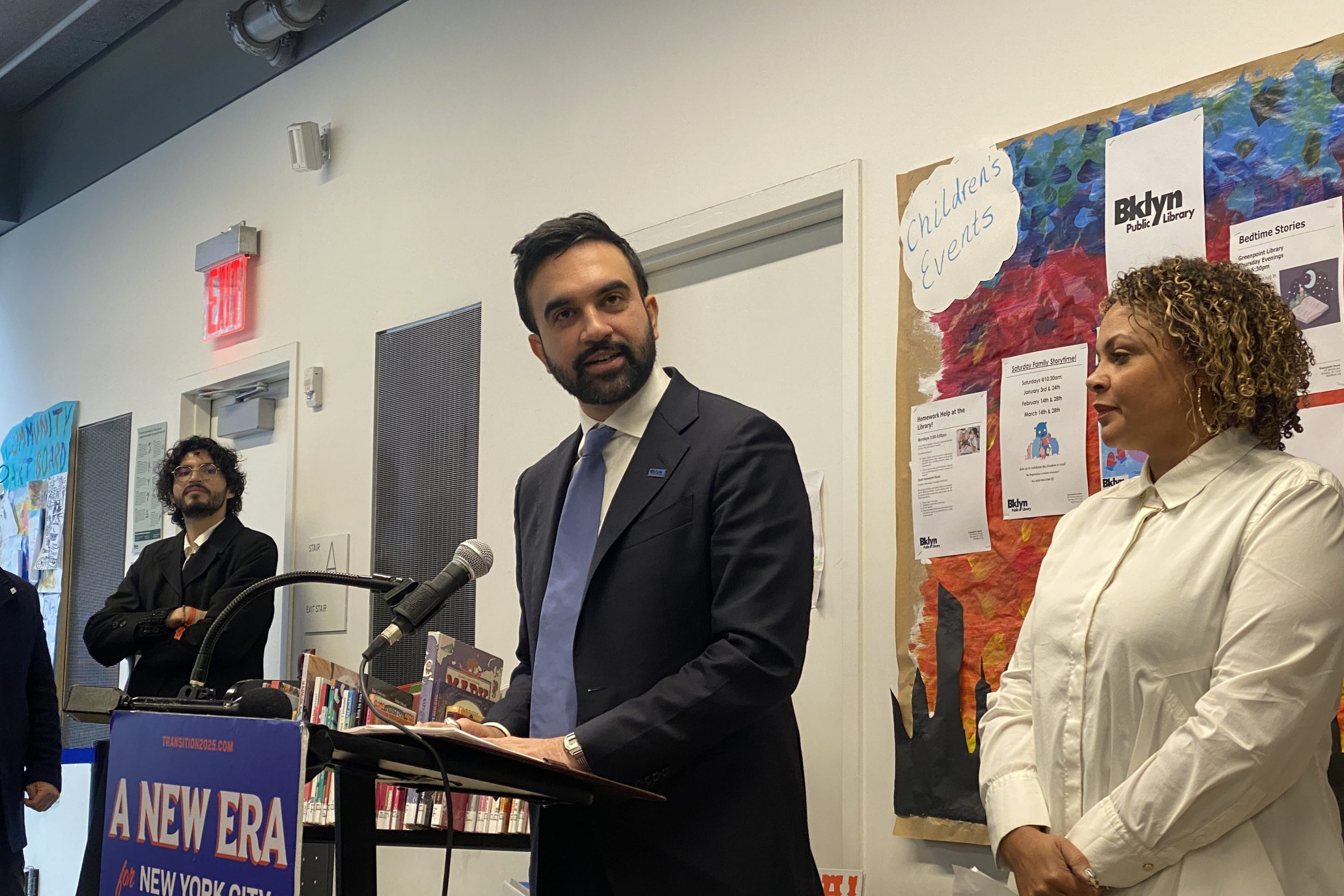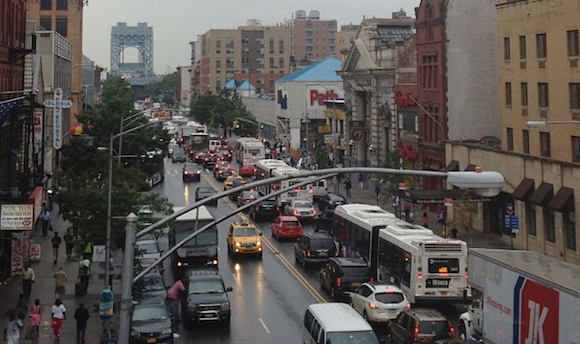
After a presentation on regional transit ridership trends at NYU's Rudin Center this morning, William Wheeler, the MTA's planning director, said the city's next mayor needs to firmly support the reallocation of street space for dedicated bus lanes, and should not back down in the face of opposition to changes that take away real estate from cars.
The biggest problem afflicting the city's bus system right now is simple and widely acknowledged: Buses are just too slow. "In the end, how fast can you get those buses across streets?" Wheeler asked. "If you can make it quickly, you're going to attract people. And that's the biggest struggle with the bus system."
The MTA has a wide-ranging plan for future phases of Select Bus Service, and mayoral candidates have spoken highly of Bus Rapid Transit, but reallocating street space for dedicated busways is easier said than done. Even a bus lane for 125th Street set aside with paint and enforcement cameras, not physical separation, drew enough political opposition to get NYC DOT and the MTA to shelve their SBS plan this summer.
After the event, I asked Wheeler how the MTA deals with that type of pushback, and whether he was keeping tabs on Chicago or other cities that are proposing big street design changes to speed up buses.
"You gotta watch the mayoral race," he said. "The candidates, are they willing to continue this trend of looking at a street and having it not just be a resource for motor vehicles?" He said the next mayor must not only resist calls to roll back existing advances, but also add more bus lanes and other street reallocations. "It's hard," he said. "The only thing more important than owning a gun in the United States is having a parking spot."
Most of the presentation, which Wheeler also gave to the MTA board's finance committee in July [PDF], covered a well-worn topic: the MTA's shifting ridership patterns, led by millennials and aging baby boomers who are working nontraditional hours, reducing car usage, traveling more between boroughs and suburbs, and increasingly making reverse-peak, off-peak, and weekend trips on transit.
Expressing frustration about the interminable planning and construction timelines for big projects, Wheeler focused on buses and smaller fixes to squeeze more capacity out of the existing system, instead of addressing the causes of high costs and long project delays. He emphasized the need to upgrade subway signals to Communication-Based Train Control and spoke highly of through-running trains with New Jersey Transit, despite logistical hurdles, to increase capacity at Penn Station.
At a time when New York City is expanding its ferry subsidies, Wheeler questioned whether ferries improve travel times and "provide serious capacity at a reasonable cost." He said they "work best in niche markets" such as cross-Hudson routes from Haverstraw and Newburgh to Metro-North service.
Wheeler warned that the MTA faces long-term funding challenges. "This capital program period that we're entering," he said, referring to the agency's maintenance and expansion plan from 2015 to 2019, "is probably the one where we're able to identify the fewest amount of resources to meet the capital needs."
An audience member suggested congestion pricing as a potential revenue source. "It's very healthy to continue the debate," Wheeler said, cautioning that any new revenue can be used to offset contributions elsewhere. "As new revenue sources are put on the table, there's lots of hungry mouths to share in that," he said. "You have to watch out… that your existing resources don't fade away."

